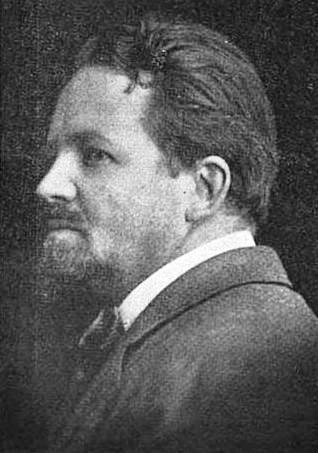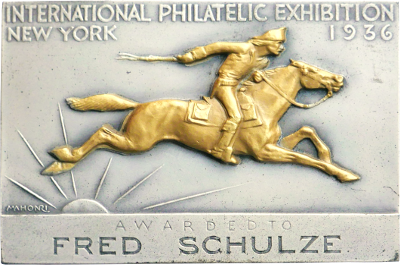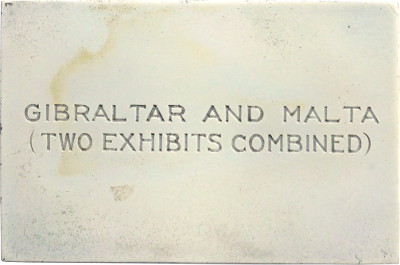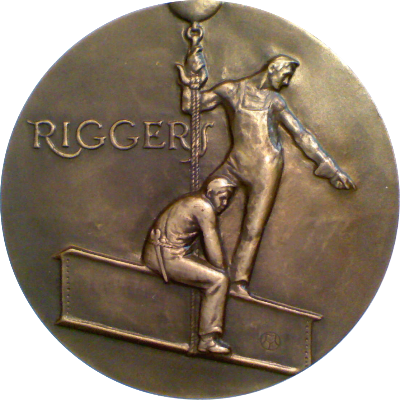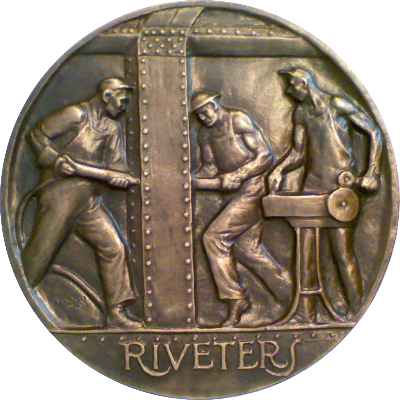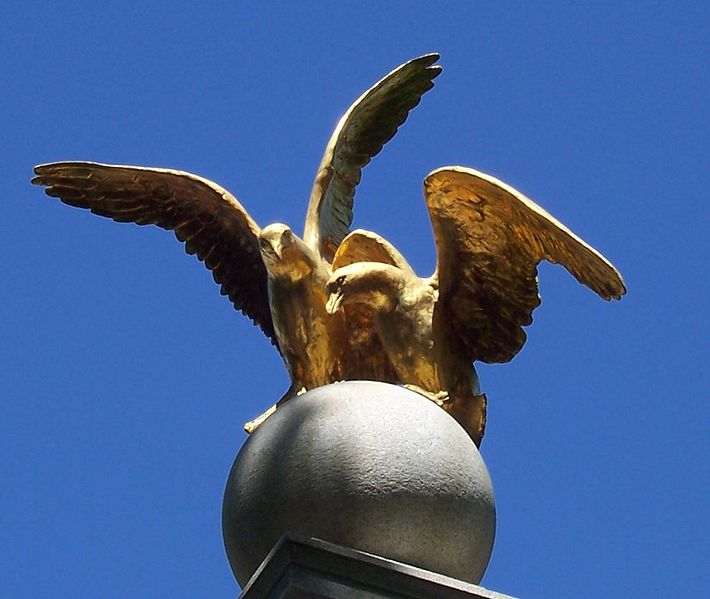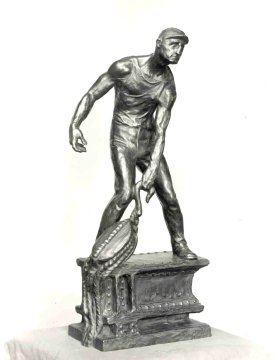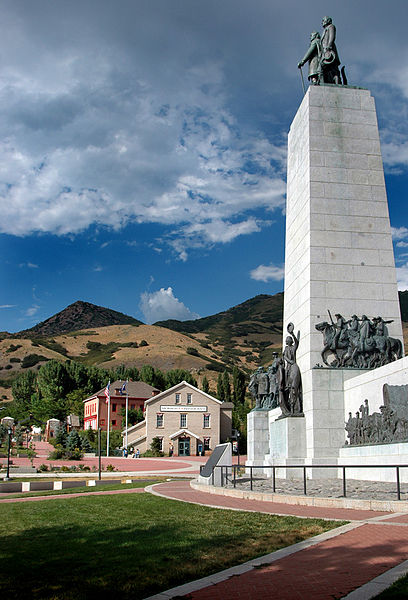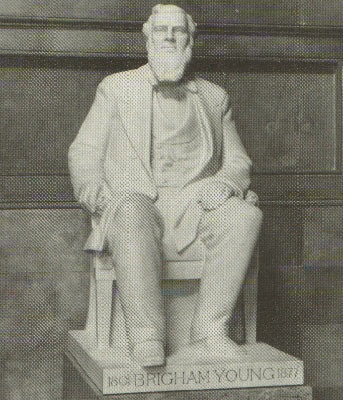Mahonri Mackintosh Young was born in Salt Lake City to Mahonri Moriancumer Young and Agnes Mackintosh Young. He was taken to be blessed by his grandfather Brigham Young, then the President of the Church of Latter Day Saints just twenty days before the church leader's and former governor's death.
Mahonri's first home was the Deseret Woolen Mills, also called "the Factory" due to its location in the midst of a carpentry, a barn, and a wool mill. Mahonri's father played a big role in his life and the two were very close. Mahonri's interest in art was probably awakened by his father who would carve little toys and guns for his son to keep his son in good spirits during a prolonged sickness. He also steered him towards clay modeling rather than wood carving to keep him safe. Unfortunately Mahonri's father died when the boy was just six years old. The family eventually had to move into a small cottage in Salt Lake City and Mahonri attended school for the first time in his life.
He was not a good student but he loved to learn about art and often borrowed books and magazines from his aunt and uncle's library. He also did a lot of whittling, turning scrap wood into toy guns. When he was eleven years old his mother gave him a wood carving kit, undoubtedly with many motherly admonitions to be careful. He used an old fence post and the carving kit to create his first serious carving, a four-inch bas relief of Julius Caesar. A traveling book salesman saw the piece and declared the boy "a genius," a term the family picked up and used for a while to refer to Mahonri.
Rather than attending high school, Young chose to pursue an artistic education under local artist James T. Harwood. He saved the money earned as a Salt Lake Tribune engraver to attend the Art Students League of New York between 1899 and 1901. There he was one of the top students in his class but had to return home for financial reasons. Working for the Salt Lake Herald, Young saved enough money to travel to Paris, France where he studied at the Académie Julian. It was in France that he decided to focus on sculpture, although his watercolor paintings were also critically acclaimed.
In 1905 he finally felt ready to begin his professional career. His finances were tenous because he still carried the debtload from his studies in France. He also needed money so he could get married and support a family. He could not meet all obligations while struggling in New York so he returned to Utah. His first commission was The Dairy Maid, a sculpture made from butter and displayed at the Utah State Fair.
In 1907, Young married Cecilia Sharp. They had two children, in 1908, a daughter, Agnes Mackintosh, and later, in 1911, a son, Mahonri Sharp (Bill). The Young family moved to New York in 1910 and his career finally took off. He worked on two major commissions, the Sea Gull Monument (1913) and a series of dioramas of the Hopi, Navajo, and Apache Indians for the American Museum of Natural History. Young's close relationship with Julian Alden Weir goes back to this time.
In a cruel twist of fate, Cecilia died of cancer in 1917, depriving another Young child of a parent at the age of six. Young threw himself into work even more and moved the family to Paris in 1925. By then, he was able to support himself and his children from his art. The Youngs stayed in Europe for almost three years.
Once back in the United States, Young met Dorothy Weir, the daughter of his old friend Julian Alden Weir. They fell in love, were married 17 February 1931 and spent their honeymoon in Europe, traveling and sketching. The marriage was a happy one. In a letter to his Latter-day Saint friend Jack Sears, dated 17 February 1937, Mahonri wrote: "Today is the sixth anniversary of our wedding. It seems but a month or so." The following years were very productive and Young undertook his biggest commission. In 1939, he was awarded a long-awaited commission from the Mormon Church and the State of Utah for a monument commemorating Utah's early history. The monument he created, entitled This is the Place, derives its name from the words Brigham Young said on entering Emigration Canyon, near Salt Lake City. Mahonri Young did all the work on the sculptures in his Weir Farm studio with the help of one assistant, Spero Anargyros. Although he considered the monument his crowning achievement, it was not accomplished without frustrations: his relationship with members of the monument commission was cantankerous; World War II made travel and working conditions difficult; and he was afraid his creative powers were waning. In the end, he had to fight to be paid. Nevertheless, at the dedication on July 24, 1947, he made the simple, poignant statement:
"Next month, come the ninth of August, I will be 70 years old. This is the greatest day of my life."
Yet again a periof of great professional success was capped by personal tragedy: just one month before his professional triumph Young's second wife Dorothy died of cancer on 23 June 1947.
At the time of Dorothy's death Young was also starting to feel his age. He was now 70 years old but still working. Even though he tended to get very tired at the end of the work day he undertook a final capstone commission for the Latter Day Saints Church to create a statue of his grandfather, Brigham Young. The statue was unveiled in 1950 and not too soon either. Young's health started declining in 1951 and he had to take it easy and significantly reduce his time in the studio.
Young died in Norwalk, Connecticut, 2 November 1957, at the age of eighty. His papers were left to Brigham Young University in Salt Lake City. His estate included 320 sculptures and thousands of paintings and sketches.
Young's most famous sculptures are The Sea Gull Monument (1913) and the This is the Place monument (1947), both in Salt Lake City, and the Brigham Young statue (1950), in the U.S. Capitol in Washington DC. He also created the Native American statues for the American Museum of Natural History in New York and a series of bronze sculptures of boxers which brought him international fame. A recurring subject in his sculpture was the industrial worker or laborer. He frequently created sculptures of working people with titles like "Factory Worker" or "Farm Worker." His Riggers and Riveters medal for the Society of Medalists (1941) fits into this part of his artistic life and picks up on a ideas he already used in an earlier sculpture called The Rigger.
Sourced mainly from Wikipedia, National Park Service, and LDS Ensign article by Thomas Toone.
